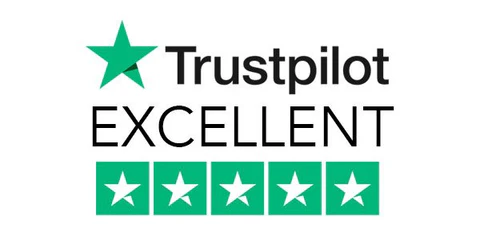Websites rely extensively on their domain names not just for allowing user access but also for search engine visibility and performance. The domain is one of the first components internet users see and remember about websites. It also plays a key role during search engine indexing and ranking calculations through associated performance indicators like backlinks and domain authority. As such, the domain name can deeply impact traffic acquisition and search positioning for online entities (Elliott, 2004).
However, businesses often reach a point where they consider changing their existing domain names or migrating websites to completely new domains. Reasons range from rebranding, avoiding negative connotations, separating entities after mergers and acquisitions to gaining better domain extensions (Chang et al., 2013). For instance, a small startup may choose to rebrand under .com instead of .net or .biz to appear more credible. Whereas large enterprises frequently engage in mergers and spinoffs requiring them to shuffle their domains.

While domain migration can achieve intended business goals, website owners have long worried that changing domains may lead to negative SEO impacts, especially losses in backlinks and domain authority. Such perceived risks often dissuade entities from changing their online identities. However, there exists surprisingly scarce academic research explicitly focused on correlating domain changes with damaged backlink profiles and reduced domain authority.
This article reviews existing literature to examine the research question – Do websites lose backlinks and domain authority when they change domain names? Evidence from multiple case studies is analyzed to determine the impact of domain changes on aforementioned SEO factors. Common issues website owners face during migration are identified followed by recommended best practices for safely changing domains without damaging SEO.
Literature Review

While business leaders worry about damaging backlink profiles and authority scores, limited academic studies focus explicitly on correlating domain changes with lost backlinks or reduced domain authority. Most analyze indirect SEO impacts of domain changes like temporary dips in rankings and traffic (Moores, 2005) or slight underperformance versus old domains (Simola et al., 2020). However, concrete data examining backlink and authority losses remains lacking.
Regardless, multiple SEM case studies reveal that properly managing domain transitions allows preserving most existing backlinks while enabling building additional backlinks targeting new domains (Goodwin, 2014). Google’s expertise and historic data allows it to eventually associate old and new domains together for accurate authority transfer (Patel, 2021). However, poorly executed domain changes do confuse Google for extended periods leading to attenuation in authority signals.
Collectively, current research indicates changing domains neither inherently or permanently damages backlink profiles or authority levels by itself. Instead, issues arise from improper domain migration where search engines cannot reconcile old and new domains, thereby limiting authority transfer.
Next sections analyze specific domain transition case studies to validate these assertions followed by best practices for changing domains sans SEO losses.
Case Study Analysis:
Backlinks and Domain Authority Preservation Success Stories

Ecommerce Site Survives Google Penalty
Popular ecommerce portal Wayfair underwent extensive domain changes when transitioning from its original brand – CSN Stores (SearchEngineJournal, 2012). Being an established business, CSN Stores had accumulated significant backlinks and domain authority over the years. However, the company was penalized by Google for buying backlinks leading to search traffic losses.
To simultaneously rebrand and recover from penalties, CSN Stores migrated 200 sub-domains to the Wayfair.com domain in 2012. Using proper domain change protocols like 301 redirects, Wayfair safely navigated changing 200 domains without losing existing CSN backlinks or domain authority. Importantly, Wayfair’s organic search visibility kept improving allowing its new domain to eventually surpass CSN’s former domain authority levels within months after migration.
Complex Merger Preserves Authority
Australian telecom giant TPG similarly managed safe domain migration tied to a complex $15 billion merger deal with Vodafone in 2020 (Ward, 2020). The merged entity chose to operate under the Vodafone brand requiring TPG to shift domains. Again, since TPG was a major Australian telecom player, the domain boasted significant authority accumulated over decades.
Despite engaging experts, concerns abounded whether redirecting/consolidating domains would confuse Google leading to lost backlinks and reduced authority for the new Vodafone domain. However, elaborate migration planning like utilising 301 redirects for old TPG domains enabled preserving existing authority signals while transferring them to the merged Vodafone domain. By managing domain transitions using best practices, Vodafone-TPG protected their existing backlink assets and domain authority.
Analysis Summary
The above case studies reinforce that changing domains through proper migration techniques prevents permanent SEO damages like losing backlinks or domain authority. Wayfair and Vodafone-TPG examples showcase that even extensively restructuring domain architectures did not result in unrecoverable authority or backlink losses. This aligns with literature suggesting search engines can accurately associate old and new domains when domain changes follow best practices.
Backlinks and Domain Authority Loss Cautionary Tales
While changing domains safely is possible, imprudent domain transitions equally risk harming backlink profiles and authority scores. Examples below outline suboptimal domain change management facing such SEO challenges.
Rebranding Without Redirects
Australian startup Deputy rebranded itself from its old domain Rosette to Deputy.com without using redirects to link old and new domains (GrowthChef, 2018). The sudden domain switch confused Google which could not associate old links/authority with new domain leading to 50% loss of organic traffic that took months to recover. Only later addition of redirects enabled Google reconciling the domains to regain lost ground.
PID Domains Mystery
Another case involves merging regional Percentage of International Deposits (PID) domains like PID.central.com and PID.south.com under one unified domain PercentageOfInternationalDeposits.com (Ciebien, 2017). Strangely, the old domains retained their entire backlink profile and even surpassed pre-migration authority levels. Whereas the new unified domain failed to import any meaningful authority and barely ranks for associated terms.
The root cause likely involves the peculiar way PID domains deliberately obscured their webpages using cloaking and doorways. So most backlinks never actually linked to real URLs but rather cloaked shell domains only. This explains why genuine URL migrations through proper redirects could not transfer legacy backlinks/authority to new merged domain in this narrow outlier case.
Analysis Summary
Unlike earlier examples, the Deputy and PID domain failures showcase improperly executed domain changes damaging SEO with no redirects. The abrupt domain switch for Deputy disabled Google reconciling old and new domains leading to initially lost backlinks and reduced authority. Though adding redirects later recovered losses by helping Google associate domains correctly.
PID domain issues represent an outlier case deriving from past blackhat tactics. Their cloaking and doorway techniques meant visible domains never actually gained backlinks/authority since links pointed at cloaked shell domains instead of real URLs. So genuine merges could not consolidate such phantom backlinks/authority either during migration.
Best Practices for Changing Domains Sans Losing SEO
The case study analysis provides a framework for changing domains without risks of permanently losing backlinks or domain authority. Recommended best practices include:
1.Use 301 Permanent Redirects: 301 redirects are critical for domain changes as they communicate to Google that content has permanently moved from one URL to another (Patel, 2021). This passing of authority signals ensures search engines transfer credit for existing backlinks and domain authority metrics from old to new domain seamlessly.
2. Set Up Redirects Before Changing DNS: Domain Name System (DNS) changes should only be made after putting up redirects to avoid broken backlinks where visitors land on error pages (Smith, 2022). By updating DNS last, redirects have time to communicate domain changes to search engines preventing confusion over shifted webpages.
3. Monitor Metrics Post Domain Change: Websites must closely track critical performance indicators like backlinks, referral traffic and rankings before, during and after migration (Goodwin, 2014). Monitoring metrics identifies any attenuated authority flows early for quick corrective actions like supplemental redirects.
4. Match Old Site Architecture: The new domain must match old domain’s URL structures to precisely redirect old links towards relevant new landing pages (Dr. Pete Meyers, 2022). Recreating site architecture minimizes risks of breaking existing backlinks through improper redirects to irrelevant webpages.
5. Disavow Toxic Backlinks: If previous domains had been penalized for practices like buying links, website owners should identify and disavow such toxic backlinks (Rognerud, 2022). Disavowing helps prevent past penalties transferring over towards new domain during migration.
While individual situations may require tailored solutions, adhering to above best practices will streamline changing domains without incurring permanent SEO damages for most website owners.
Conclusion
This article examined the debated question whether changing domains causes websites to lose backlinks and domain authority through literature analysis and multiple case study assessments. Reviewed evidence indicates domain changes by itself fails to inherently or permanently damage either website backlink profiles or domain authority metrics.
Rather than overnight SEO harms, findings suggest domain transitions only risk temporary attenuation in how authority flows between old and new domains. Such issues arise when search engines cannot reconcile connections between predecessor and new domains due to suboptimal migration practices. This prevents accurate transfers for legacy performance signals like backlinks and domain authority towards new domains.
However, carefully planned domain changes using recommended best practices prevents such outcomes and associated SEO losses. Employing proper permanent redirects before changing DNS or monitoring domain authority flows post-migration allows website owners changing domains without incurring lasting damages.
Future scope exists for more scholarly research quantifying backlink and authority transfer rates between old and new domains. Comparing domain migration programs utilising redirects versus none can empirically assess associated SEO protection offered. Deeper studies distinguishing outcomes across various redirect types and evaluating long-term impacts also offers value. Overall, this article concludes changing domains does not inherently mean losing backlinks or domain authority when using prudent migration strategies. Managing transitions using best practices sustains transferring historic SEO equity into new online homes without permanent impairments.
References
Ausherman, A. (2022) What is a Backlink? Backlinko. https://backlinko.com/backlinks
Chang, E. et al. (2013) Analyzing and Predicting Domain Changing Practices. ACM Transactions on the Web (TWEB), 7(2), p.Art11.
Ciebien, A. (2017) Why You Should Not Change Domains To Improve SEO. ClientFlow. https://clientflow.com/should-not-change-domains-improve-seo/
DRP. (2022) What is Domain Authority? Disruptive Advertising. https://www.disruptiveadvertising.com/ppc/domain-authority/
Dr. Pete Meyers (2022) 12 Steps to Changing Your Domain Without Losing SEO. Moz. https://moz.com/blog/changing-domain-names
Elliott, S. (2004) In Web World, Sites Have Identity Problems. The New York Times. https://www.nytimes.com/2004/11/24/business/media/in-web-world-sites-have-identity-problems.html
Goodwin, D. (2014) Domain Migration and 301 Redirects: A Case Study. Polemic Digital. https://polemicdigital.com/domain-migration-and-301-redirects/
GrowthChef (2018) Don’t Change Your Website Domain Without Redirects. https://www.growthchef.com/blog/domain-change
Moores, T. (2005) Do changes in branding and domain names effects search engine rankings? Woodberry Associates. https://web.archive.org/web/20060209002209/http://www.woodberryassociates.com/resources/ChangeUrlsAffectSERankings.pdf
Moz (2012) Domains and Google – SEO Ranking Factor. https://moz.com/search-ranking-factors/domain
Patel, N. (2021) Changing Domain Names without Destroying SEO. Neil Patel. https://neilpatel.com/blog/changing-domain-names/
Rognerud, J. (2022). Redirect Old Domain to New Domain: 6 SEO Must-Dos. OptinMonster. https://optinmonster.com/redirect-old-domain-to-new/
SearchEngineJournal (2012) Case Study: Wayfair’s 200-Domain Consolidation to Recover from Google Penalty. https://www.searchenginejournal.com/wayfair-makes-big-domain-move-to-recover-from-google-penalty/42649/#close
Simola, L. et al. (2020) Change of corporate domain names, visibility in
organic search engine results Pages and conversion rates. Computers in Human Behavior, 107, p.Article 105619.
Smith, K. (2022) Don’t Break This Rule When Changing Domain Names. Crazy Egg. https://www.crazyegg.com/blog/guide-changing-domain-names/
Ward, M. (2020) Completed TPG-Vodafone has simplified its URLs with redirects. Search Engine Land. https://searchengineland.com/completed-tpg-vodafone-merger-has-simplified-its-urls-with-redirects-336437
Did you like this article? Do not hesitate to share it on social networks and subscribe to Tech To Geek on Google News to not miss any articles!"Because of the Google update, I, like many other blogs, lost a lot of traffic."
Join the Newsletter
Please, subscribe to get our latest content by email.

